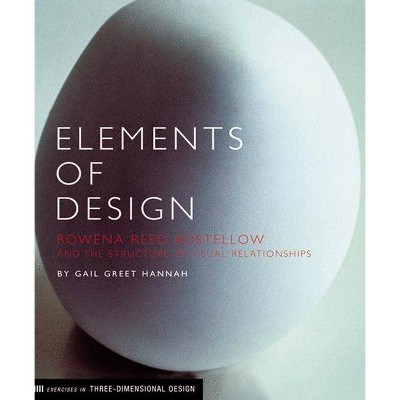Elements of Game Design - by Robert Zubek (Hardcover)

Similar Products
Products of same category from the store
AllProduct info
<p/><br></br><p><b> About the Book </b></p></br></br>""Elements of Game Design" is an introductory text on game design. The goal is to teach students a structured process of design applicable to games and interactive experiences, and introduce the vocabulary and techniques of practicing game designers. The text draws on the author's experience as a professional game developer, as well as a teacher of an intro-level game development class. The book begins by introducing the user-centered design paradigm, and explain a games-specific process that splits the design problem into several conceptual stages. The bulk of the text explores those stages in detail, and teaches how to analyze and resolve them. Throughout the text we introduce the technical vocabulary and concepts used by designers in the industry, and illustrate the particular lessons with numerous real-life examples. The text ends with a review of the overall process and its application in the production of new games"--<p/><br></br><p><b> Book Synopsis </b></p></br></br><b>An introduction to the basic concepts of game design, focusing on techniques used in commercial game production.</b><p>This textbook by a well-known game designer introduces the basics of game design, covering tools and techniques used by practitioners in commercial game production. It presents a model for analyzing game design in terms of three interconnected levels--mechanics and systems, gameplay, and player experience--and explains how novice game designers can use these three levels as a framework to guide their design process. The text is notable for emphasizing models and vocabulary used in industry practice and focusing on the design of games as dynamic systems of gameplay<i>.</i></p><p>The book first introduces the core model and framework for analyzing and designing games. It then discusses the three levels in detail, explaining player experience and identifying design goals; introducing low-level structural analysis of gameplay in terms of basic mechanics; describing how mechanics build up into systems; and presenting concepts for understanding gameplay, defined as the dynamic behavior of players when they interact with mechanics and systems. Finally, the book offers students advice on creating game prototypes using an iterative, user-centered process. Each chapter offers a set of exercises for individuals and design challenges for groups.</p><p/><br></br><p><b> Review Quotes </b></p></br></br><br>This is the introduction to game design we've been waiting for. Through systems, games train our thumbs, tickle our curiosity, and tell stories in which our choices matter -- and <i>Elements of Game Design</i> offers the best introduction I've seen to systemsoriented game design. <br><b> - Noah WardripFruin, Professor of Computational Media, University of California, Santa Cruz; author of <i>How PacMan Eats</i></b> <p/><i>Elements of Game Design</i> provides a nuanced take on subjects such as gameplay mechanics, player psychology, and narrative structures -- a wonderful survey of theoretical and practical thinking on how to design games. <br><b> - Eric Zimmerman, Arts Professor, NYU Game Center; coauthor of <i>Rules of Play</i></b><br><p/><br></br><p><b> About the Author </b></p></br></br>Robert Zubek is a game designer and developer and cofounder of SomaSim, an independent game studio in Chicago. Previously, he built large-scale social online games at Zynga, MMO game and analytics infrastructure at Three Rings Design, and console games at Electronic Arts/Maxis. He holds a PhD in computer science from Northwestern University, with a specialty in artificial intelligence and robotics.
Price History
Price Archive shows prices from various stores, lets you see history and find the cheapest. There is no actual sale on the website. For all support, inquiry and suggestion messages communication@pricearchive.us




















